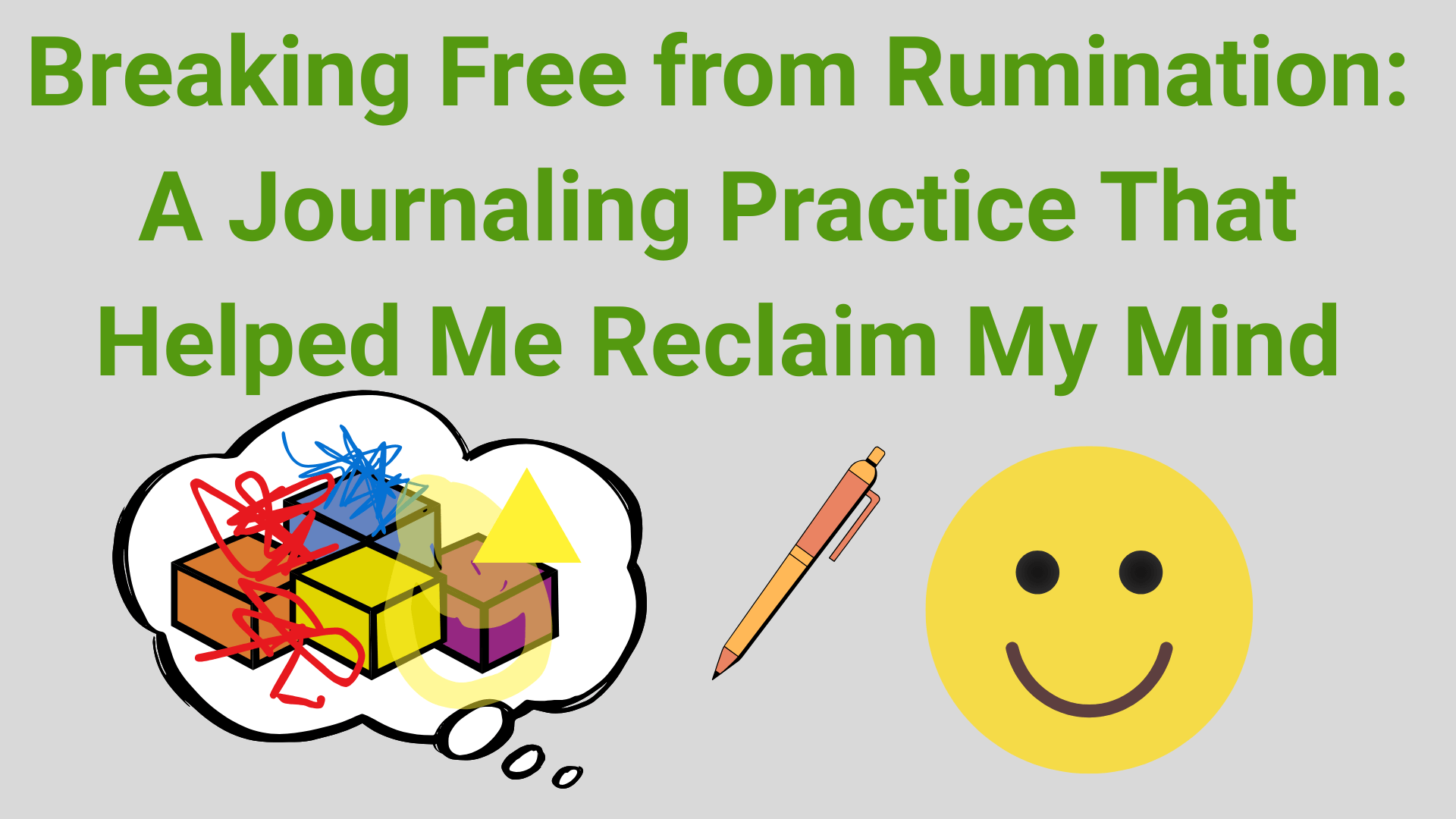It’s been a long journey and the pattern hasn’t disappeared completely—but I’ve started to feel real improvement in my rumination habit. That’s why I want to share what has worked for me.
There was always a vague sense that my ruminative thoughts followed the same loop, over and over again. Something rigid, stuck, unchanging. This pattern had been repeating for years, and one day I just couldn’t take it anymore. I snapped, realizing that this was not normal—it was deeply unhealthy.
So I picked up my journal and started drawing out the thought pattern. Not writing in words, but visualizing the loops and knots that kept spinning in my mind. What does the structure of my rumination even look like?
By externalizing it onto the page, I could finally see it. Grasp it. Own it. And with that came a surprising sense of release. Like I was purging poison that had been quietly infecting me for far too long.
This wasn’t a magic solution. But simply taking what had been allowed to run free in my mind and laying it out visually felt like an internal audit. And that felt empowering.
I also realized something else: I could draw it out instead of writing it. I had always believed these loops were too messy, too personal to put into words—but I was wrong. Keeping these thoughts locked in my head only seemed to reinforce them. Visualizing the pattern—mapping it out on paper—broke that cycle.
Of course, these thought loops had been ingrained for so many years that they still show up sometimes. But now, every time they do, I pause. I ask myself:
- What exactly am I feeling right now?
- Is this emotion helpful to me?
- No—I’m feeling bad, which means this thought isn’t helping me.
- So maybe it was wrong of me to ever accept it as valid.
I started challenging the stories I had long accepted as truth. Coldly. Logically. Using counter-opinions. This wasn’t a unique experience, I reminded myself. Others go through similar loops. I found books and blogs that described the same patterns—and in reading them, I found new ways of thinking, even hints toward solutions.
Still, I won’t pretend I’m completely free from rumination. But thanks to these practices, especially the visual journaling, the patterns are fading. Especially the one tied to a long-standing relationship I finally chose to change.
By being honest with myself, I started relating to that person differently. I had spent years trying to maintain a connection that was actually harming me. When I ended it, there was a brief moment of emptiness—but after that, deep relief.
What I had felt was not connection—it was obsession. It was entrapment. In Japanese, the kanji for “toraware” (囚われ) says it all: a person (人) trapped inside a box. I finally broke the box. I drew a boundary. I ended my self-imprisonment.
But I knew that if I didn’t fill that void with something new, I might fall back into old habits. So I made a conscious decision to reconnect with the world—to meet new people, explore new ideas. And that shift has helped me dramatically reduce the pull of rumination.
What I’ve Learned Through This Process
- Forcing myself to maintain unhealthy relationships actually damaged my self-esteem and didn’t help the relationship either.
- I became better at identifying people and patterns that negatively affect me.
- Some people were fun once, and that’s okay. It’s okay to archive them as memories rather than force ongoing connection.
- We don’t have to talk it out with everyone. Some relationships end, and that’s healthy. If the connection is meant to return, it will.
- Visualizing vague, hard-to-name emotional patterns can move you forward.
- I still don’t know how to completely stop rumination in one shot—but I do know this: When I’m talking to new people or in new environments, I don’t ruminate. So I plan to increase those moments and slowly eliminate the habit entirely.
If you’re dealing with persistent, repetitive thoughts, I hope some of this resonates with you. You’re not alone—and sometimes, just putting the pattern on paper is the first real step toward freedom.
About Me: Hi, I’m Evolving Mind. Through this blog, I share my journey of self-discovery and mental well-being. Journaling has been a powerful tool for me, and I hope to inspire others to find their own path to peace and clarity. You can learn more about my journey in my post, Welcome to the Journey of the Mind by Evolving Mind.


Comments